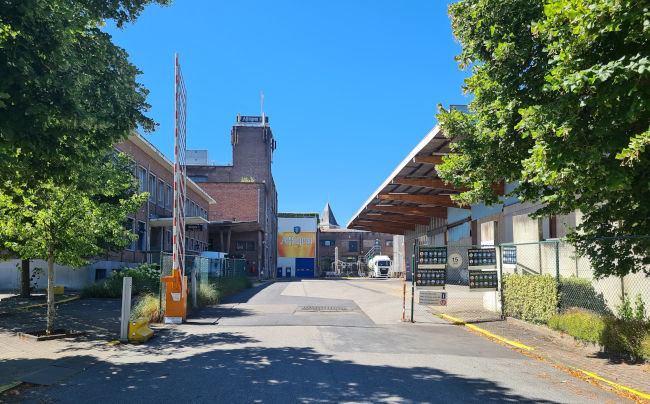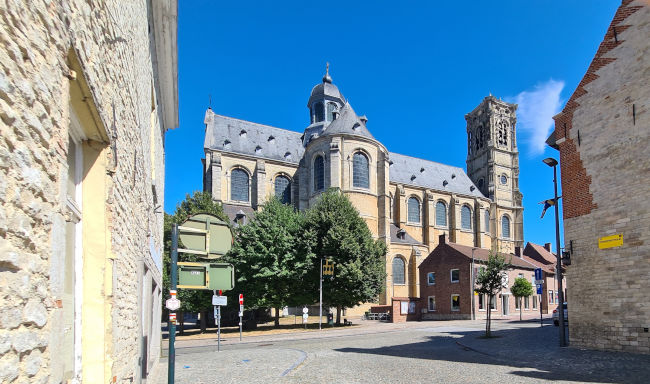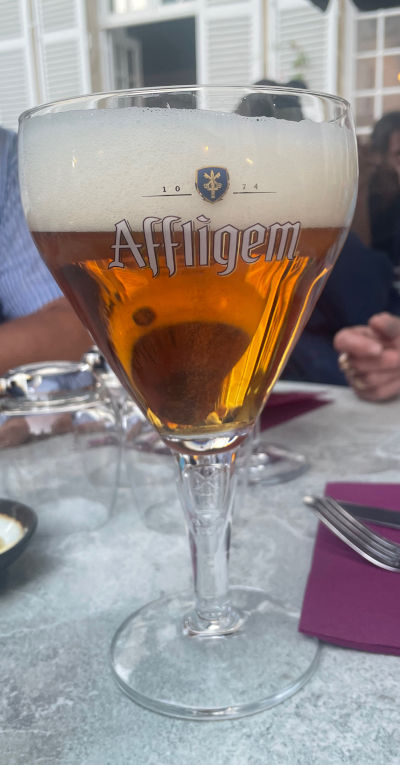Leffe, Grimbergen and Affligem: Do abbey beers need a home?
Belgium | At the end of August, Heineken will turn off the lights at the Affligem brewery in Opwijk. Although the official reason for the closure is plausible enough – the plant is subpar Heineken’s sustainability standards – it still raises pertinent questions.
Above all, does Heineken think the brand can thrive without a physical home? The beer is named after the Affligem Abbey, situated a few km down the road. It is a Benedictine monastery, which was dedicated in 1086.
This question has been bugging me since January, when Heineken announced its imminent closure. It eventually became a puzzle because the nearby Grimbergen Abbey had just opened a swish new brewery cum restaurant (June 2021), the first on its site for some 200 years, with great fanfare.
Not enough, in June this year, the Grimbergen brewery was joined by a no-expenses-spared visitor centre, which provides “a multi-sensory experience journey through Grimbergen’s 900-year history,” according to Carlsberg’s press release. Grimbergen is a Premonstratensian monastery, which was established in 1128.
Grimbergen, Affligem and their two masters
The two events – one closure, one opening – can shed light on how the two Big Brewers, Heineken and Carlsberg, view their respective abbey beer brands. Incidentally, there is no spin on either Affligem or Grimbergen in their 2021 annual reports, which may indicate they are just one of several hundred brands in their respective global portfolios.
Still, Carlsberg’s honchos decided to splash out on a new 10,000 hl brewery, which gives the brand not just a physical home but also a ring of authenticity. At least this would have been the plan. Consider it an extra boon that Carlsberg can enlist Father Karel Stautemas, the Provisor at Grimbergen Abbey, as the brand’s ambassador.
However, it is debatable if abbey beer brands need a physical home. Unlike Trappist beers, which must be brewed at Trappist monasteries under the supervision of its monks to carry the Trappist seal, abbey beers are brewed by secular breweries in reference to an abbey. Usually there is a contract between the abbey and the brewery, which provides the abbey with royalties in exchange for the use of its brand.
There is no Leffe brewery
The best-known and best-selling abbey beer is AB-InBev’s Leffe, which is brewed at AB-InBev’s breweries in reference to Notre-Dame de Leffe, an abbey of Premonstratensian canons in Belgium’s Dinant, founded in 1152. The monastery was abandoned during the French Revolution – a fate that also befell Affligem and Grimbergen.
In 1952, the production of Leffe beer was taken up again in a partnership with the Lootvoet brewery in Overijse. This brewery was later bought by Belgium’s Artois (which then became Interbrew, InBev and now AB-InBev). At AB-InBev’s behest, the Leffe licence has since been extended to Molson Coors for central and eastern Europe, and to Asahi for Oceania.
Leffe underlines that an abbey beer brand can flourish under a Macro Brewer for as long as punters think the beer honours the highest ethical standards and an unwavering commitment to quality, which is crucial at a time when corporations are better known for their greed, short termism, and strategy swings.
Licences in a knot
Why did Heineken decide to close the Affligem brewery? I can only speculate that Heineken deemed the Affligem brand as surplus to requirements in Belgium. When Heineken and Carlsberg jointly took over brewer Scottish & Newcastle in 2008, Heineken obtained Alken-Maes, the number two brewer in Belgium, including its long-term Grimbergen licence for Belgium.
Carlsberg, for its part, got France’s Kronenbourg brewery, which had the Grimbergen licence for the rest of the world. If you think this a highly complex relationship, whereby Heineken and Carlsberg act both as collaborators (Grimbergen) and competitors (Affligem vs Grimbergen), you are spot on.
Heineken’s incentive to push Grimbergen
In Belgium, Grimbergen outsells Affligem by far and has done so for many years. Grimbergen on draught can be found all over and, since the end of the covid lockdowns, at fairly high prices. Expect to pay EUR 5 for a 250 ml glass, compared with EUR 4.30 for a glass of Affligem. No wonder, Heineken has felt inclined to push Grimbergen rather than its own Affligem brand. The financial rewards would have been far higher.
Despite all the articles written about Belgian Trappist and abbey beers in international media – these alcoholorific beers are truly exotic in our secular times – the market for these beers is relatively small and limited to a few countries. Most abbey beers are drunk in just three countries: France, Belgium, and the Netherlands, with France being the major market.
Battling it out in France
Take Leffe: of the estimated 2.5 million hl sold in the three countries in 2020, more than 2 million hl were sold in France alone. Grimbergen, which is brewed by Carlsberg in Obernai, France, and has seen its output rise to an estimated 1.5 million hl in 2020, from 280,000 hl in 2008, also counts France as its biggest market.
What does this make Affligem? The short answer is: an also-ran. Estimates put Affligem’s total volume at some 500,000 hl annually. Except for perhaps a few thousand hl in Belgium, the bulk of the brewery’s output has long been shipped to France. That may have been the reason why Heineken got interested in Affligem in the first place. Before it bought Affligem in 2000, it did not have an abbey beer in its portfolio, which could take on Leffe in France. With Affligem it suddenly had a challenger.
How to make tough business decisions
But two decades later, the idea must have taken hold that selling Affligem in France did not warrant the costs of running a dedicated, medium-sized brewery in Belgium. “Did not AB-InBev’s Leffe show that cumbersome paraphernalia like a brewery are superfluous if a brand is healthy?” Heineken’s cost cutters may have argued. And the marketers would have added, scratching their chins: “Well, well, according to the Boston Consulting Group’s product portfolio matrix, our Affligem brand can be a cash cow, if we radically trim costs. Or it could end up as a dog, given its low market share and low rate of growth. Do we want that?”
Of course, this dialogue is pure fantasy. Nevertheless, companies regularly draw upon the BCG’s growth-share matrix or similar tools when deciding which brands to keep, sell, or invest more in. In the end, all forecasts about a brand’s future rest on these so-called “scientific” methods, which more often than not, turn into a QED.
The final closure of the Affligem brewery will be a sad day for its workers, the monks and possibly a few passionate consumers. But as the corporates never tire of reminding us: courage is the key to making tough decisions.






